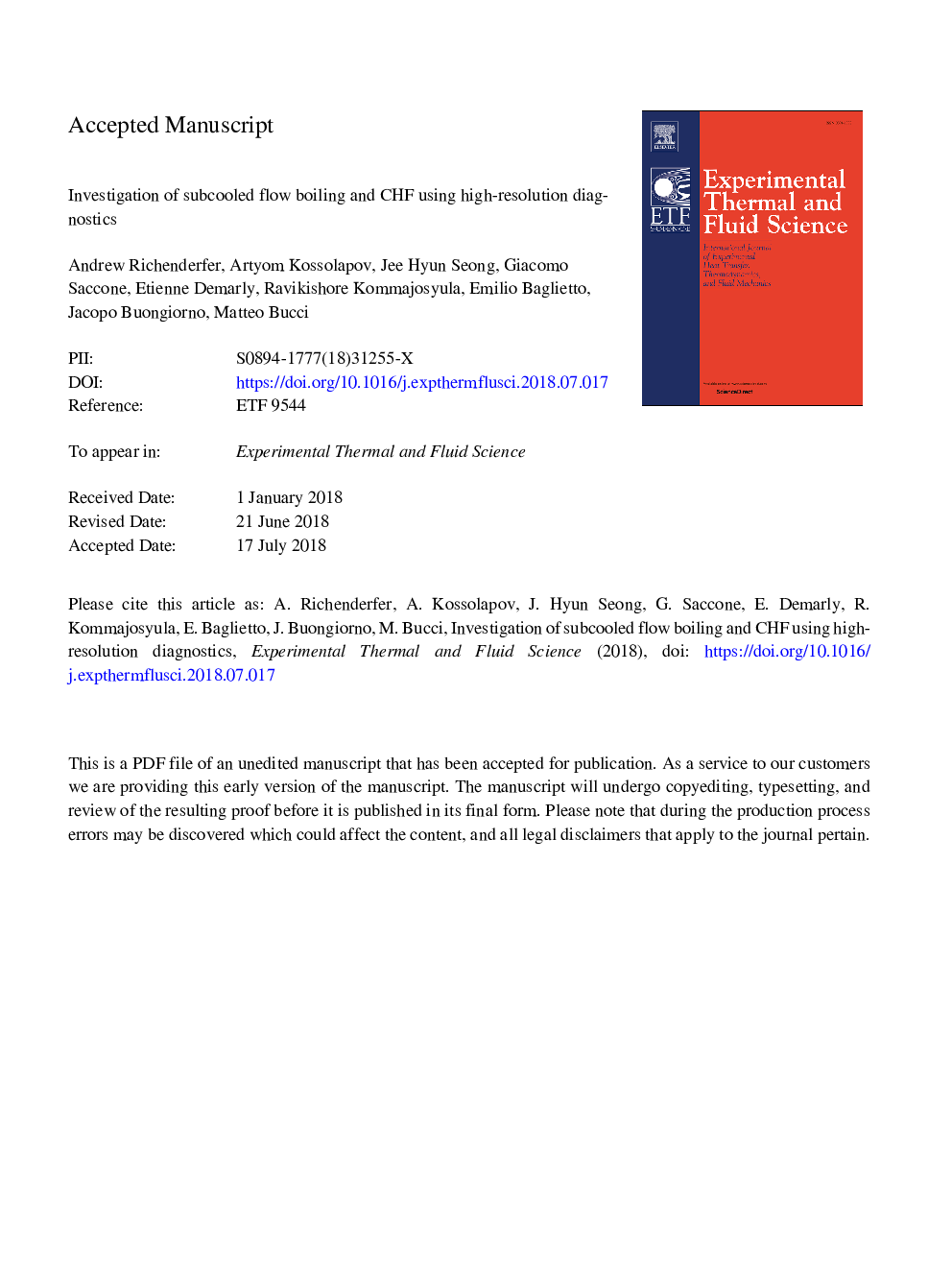| Article ID | Journal | Published Year | Pages | File Type |
|---|---|---|---|---|
| 7051435 | Experimental Thermal and Fluid Science | 2018 | 43 Pages |
Abstract
We present an experimental methodology that enables accurate measurement of fundamental subcooled flow boiling quantities, such as nucleation site density, bubble growth and wait time, and bubble departure diameter, up to the Critical Heat Flux (CHF) limit. The methodology is based on high-speed video and high-speed InfraRed (IR) diagnostics, combined with advanced post-processing techniques developed in-house. It also provides hitherto unavailable direct estimates of the individual terms of wall heat flux partitioning in subcooled flow boiling; such information is crucially relevant to the validation of the latest mechanistic flow boiling heat transfer and CHF models. Experiments were performed using deionized (DI) water, on a rectangular cross-section channel (3â¯Ãâ¯1â¯cm2), at atmospheric pressure and 10â¯Â°C of subcooling, for three mass fluxes (500â¯kg/m2/s, 750â¯kg/m2/s, and 1000â¯kg/m2/s). For each set of operating conditions, the average heat flux was escalated from single-phase forced convection up to the occurrence of CHF, and all boiling parameters were recorded at each heat flux. The trends of measured wait time, growth time and bubble departure diameter were successfully captured by mechanistic models developed or co-developed by the authors. Measurements of the wall heat flux partitioning have revealed that the contribution of microlayer evaporation increases monotonically with the increase of the average heat flux, due to the increase of nucleation site density and bubble departure frequency. However, for our specific heater and operating conditions, the contribution of the microlayer evaporation barely exceeds 50% of the total heat flux, right before CHF.
Keywords
Related Topics
Physical Sciences and Engineering
Chemical Engineering
Fluid Flow and Transfer Processes
Authors
Andrew Richenderfer, Artyom Kossolapov, Jee Hyun Seong, Giacomo Saccone, Etienne Demarly, Ravikishore Kommajosyula, Emilio Baglietto, Jacopo Buongiorno, Matteo Bucci,
